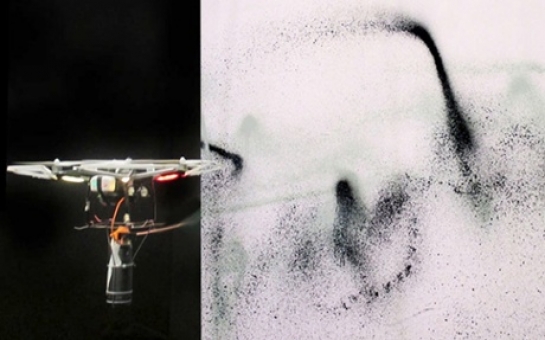Follow us !
Spraycopter: the drone that does graffiti - VIDEO
Culture
12:00 | 23.04.2014

Spraycopter: the drone that does graffiti - VIDEO
For street artists who don't have a head for heights, or who just can't be bothered to scale drainpipes, scamper along rooftops and dangle from parapets, help may now be at hand for tagging those hard to reach spots – in the form of a spray-paint wielding drone.Developed by New York graffiti artist, Katsu, who rose to fame in the 1990s by peppering the streets with his iconic skull tag, the device is the latest step in his pursuit to paint bigger than anyone else in the city.“Drones allow me to do what I had always yearned to do,” he told Bard College's Centre for the Study of the Drone. “I’ve always looked at a building or looked at a canvas and stretched my arms out with my eyes. My eyes have always been able to reach it but my limbs have never been able to touch and reach these spaces.”Lacking go-go-gadget arms, in the past he has used fire extinguishers to blast vast quantities of paint across huge areas, obliterating rivals' puny tags with building-sized letters. Now he hopes his pet paint-spraying drone will let him get to places others can only dream of reaching.“I have this little video game-inspired fantasy of lying in my bed, sending my drones out my bedroom window,” he said, “having them render my tags all over the city and then flying back home to me, like, in my bed.”But don't hold out hope that his aerial army will be capable of producing finely crafted robo-art. The paintings his flying friends have produced so far look a bit like what you would expect a remote-controlled spray-can-carrying quadcopter to look like – wayward streaks and clumsy splatters, like a Jackson Pollock undercoat.“The idea would be to eventually create a drone that has a free flight mode that allows either for more collaboration with the drone or less collaboration with the drone,” said Katsu, imagining a future where his aerial spray team would be granted a certain level of autonomy. “Then [they could have] a dual flight mode, where I can have the freedom to get the drone where it needs to be and then put it into a new flight mode to maybe execute a tag or something that almost looks hand-drawn.”With the German national rail network launching its own anti-graffiti drone last year, can we look forward to a future of aerial art combat, graffiti quadcopters doing battle with all-seeing surveillance drones, spurting rainbow streaks across our skies? The safety-conscious Katsu sees one big potential stumbling block.“There are a lot of other things now that have to be taken into consideration,” he said. “It’s not like, ‘Oh, I’ll slip off the edge of this bridge and die’, it's like, ‘I might have the drone drift off and I might kill someone.’”(theguardian.com)BakuDaily.Az










